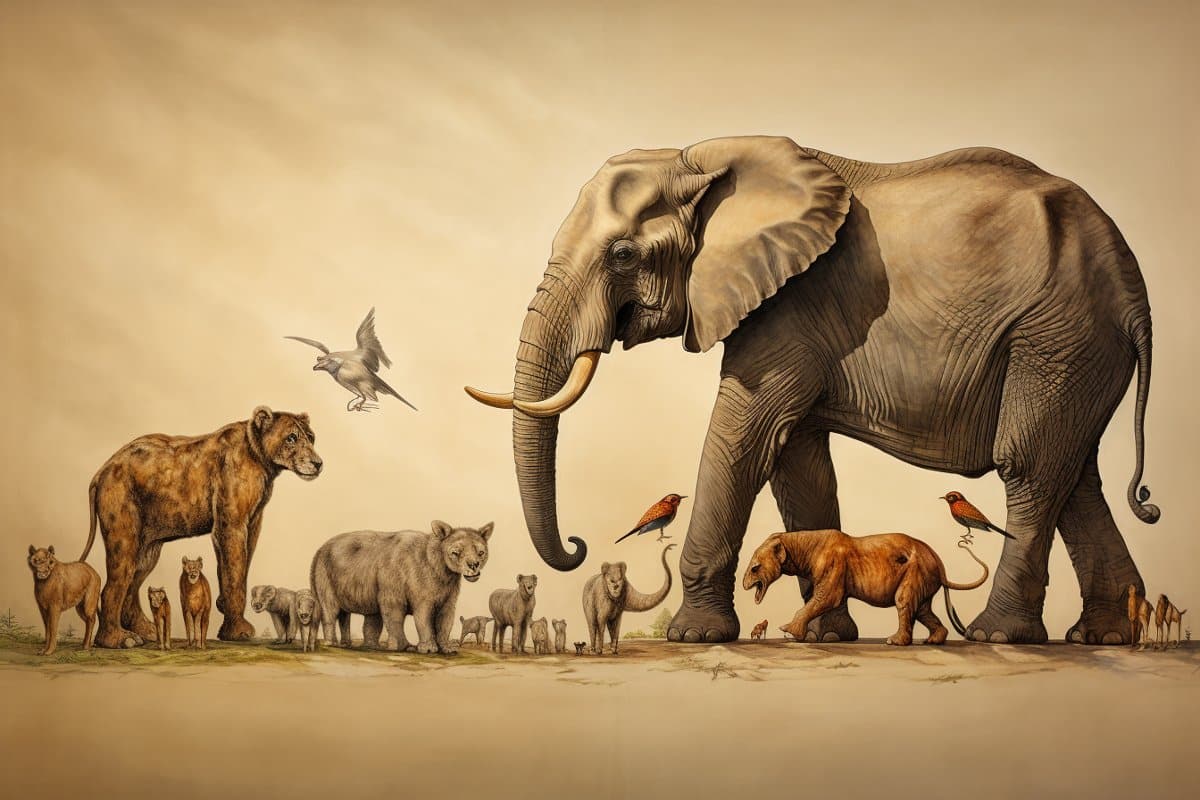Summary: A new study challenges traditional views on animal size evolution. The study, utilizes computer models to demonstrate how ecological factors, like competition for resources and extinction risk, influence animal size changes over time.
Contradicting the generalized Cope’s rule, which suggests a trend toward larger sizes, the research finds that intense competition often leads to smaller sizes, as seen in Alaskan horses and island lizards. The study provides a nuanced understanding of size evolution, explaining the conflicting patterns observed in fossil records.
Key Facts:
- The study identifies two main ecological drivers of animal size change: competition intensity and extinction risk.
- Findings challenge Cope’s rule by showing that high competition can lead to smaller animal sizes over time.
- The research uses computer simulations to explain varying size evolution patterns observed in different species, including gradual increases, decreases, and size increase followed by extinctions.
Source: University of Reading
The mystery behind why Alaskan horses, cryptodiran turtles and island lizards shrunk over time may have been solved in a new study.
The new theoretical research proposes that animal size over time depends on two key ecological factors: the intensity of direct competition for resources between species, and the risk of extinction from the environment.
Using computer models simulating evolution, the study, published today (Thursday, 18 January) in communications biology, identifies why some species gradually get smaller, as indicated by fossil records.
Dr Shovonlal Roy, an ecosystem modeller from the University of Reading who led the research, said: “Just like how we try to adapt to hot or cold weather depending on where we live, our research shows animal size can get bigger or smaller over long periods depending on the habitat or environment.
“In places and times where there’s lots of competition between different species for food and shelter, animal sizes often get smaller as the species spread out and adapt to the distribution of resources and competitors. For example, small horses that lived in Alaska during the Ice Age rapidly shrank due to changes in the climate and vegetation.
“Where direct competition is less, sizes tend to get bigger, even though being really big and few in number can make animals more vulnerable to dying out – such as what happened with the dinosaurs.
“Changes in ecological factors help explain why fossil records shows such confusing mixes of size evolution patterns, with some lineages shrinking over time and others growing.”
Cope’s rule
The research team carried out their study by challenging the contradictions fossil evidence posed to “Cope’s rule.” Cope’s rule refers to the tendency for certain animal groups to evolve larger body sizes over thousands and millions of years.
The rule is named after Edward Cope, a 19th-century palaeontologist who was credited to have first noticed this pattern in the fossil record. For example, early horse ancestors were small dog-sized animals that increased in size over evolutionary time, ultimately producing the modern horse.
However, fossil evidence shows remarkably conflicting trends, with increased size in some groups but decreased size in others.
Evolutionary pressure
Using computer models simulating evolution, the study identified three distinct patterns of body-size change emerging under different conditions:
- Gradual size increase over time: This happens when competition between species is determined mostly by their relative body sizes rather than niche differences. For example, several genera of marine animal species (e.g. invertebrates) gradually increased in size over millions of years.
- Size increase followed by extinctions: Here the largest animals recurrently go extinct, opening opportunities for other species to take their place and evolve even bigger bodies, continuing the cycle. Mass extinctions hit large-bodied apex predators hardest. Very large mammals and birds are particularly vulnerable to extinction – for example, dinosaurs and giant flying reptiles.
- Gradual size decrease over time: The simulations also predicted the opposite of Cope’s rule: species shrinking over time. This happens when competition is high and there is a degree of overlap in habitat and resource use. As species evolve apart into distinct niches, they face evolutionary pressure to reduce in size. Decline in size was previously reported for vertebrates, bony fish, cryptodiran turtles, Alaskan Pleistocene horses, and island lizards.
About this evolutionary neuroscience research news
Author: Ollie Sirrell
Source: University of Reading
Contact: Ollie Sirrell – University of Reading
Image: The image is credited to Neuroscience News
Original Research: The findings will appear in Communications Biology







